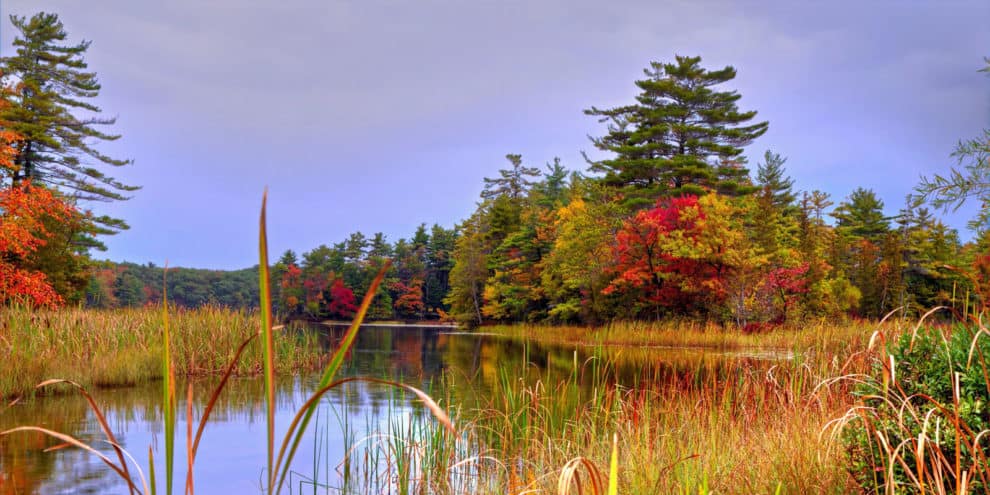One of the biggest hassles I’ve encountered in my land investing business is dealing with the presence of wetlands on the properties I’ve owned. Wetlands can present some HUGE challenges for land owners, because this type of land is protected by the government (both at the state and federal level), and unless a land owner can prove that there is no other way to accomplish their intent with a wetland property, it can be very, very difficult to use or develop this type of land in any practical way.
Even though some types of wetlands are easy to identify (e.g. swamps, bogs, marshes, and the like), wetlands are not always easy to spot at first glance.
As the EPA explains,
“Although wetlands are often wet, a wetland might not be wet year-round. In fact, some of the most important wetlands are only seasonally wet. Wetlands are the link between the land and the water. They are transition zones where the flow of water, the cycling of nutrients, and the energy of the sun meet to produce a unique ecosystem characterized by hydrology, soils, and vegetation—making these areas very important features of a watershed.”
So, if wetlands can’t always be observed and identified by the untrained eye, how can a land investor know if their property is impacted by the presence of wetlands?
Unfortunately, the only way to be 100% certain about the presence of wetlands on a given property is to hire a wetland consultant and/or request a visit from the U.S. Army Corps of Engineers, so they can perform a wetland identification and delineation on the property. Through this process, they can closely examine the land onsite and determine whether there are wetlands present and where the boundaries of the wetlands are located.
The problem is, when you need absolute certainty about the wetlands situation, it can eat up a lot of time and money while you’re waiting on these answers. Even though this is the “correct” textbook way to get the right answers, it’s not always feasible to pull this off, and it can be a deal-killing issue in some cases.
Some real estate transactions require some fairly rigid time constraints. You may not be able to afford the luxury of having absolute confidence.
Luckily, we live in the information age, and it is possible to do some “reconnaissance level” research on the wetlands situation with the properties you’re working with.
Introducing: The Wetlands Mapper
The U.S. Fish & Wildlife Service offers a free tool through the National Wetlands Inventory called the Wetlands Mapper. If you need to identify any obvious red flags without leaving your computer, this is a great way to get a more educated look at the land you’re evaluating. I’ll explain how it works in this video:
You can get started with the Wetlands Mapper, or you can download the KML file and view this same wetlands data on Google Earth.
Important: It’s important to recognize that the Wetlands Mapper does not offer the same level of accuracy you would get by hiring a wetlands consultant and/or having the USACE do a delineation on your property – so if you’re going to rely on this free mapping tool, be aware that there are no guarantees with this approach. However, if you’re just looking for an educated guess, this can be a good starting point.
Written by Seth Williams, founder of RETipster.com – Real World Guidance for Part-Time Real Estate Investors.
This content may not be used or reproduced in any manner whatsoever, in part or in whole, without written permission of LANDTHINK. Use of this content without permission is a violation of federal copyright law. The articles, posts, comments, opinions and information provided by LANDTHINK are for informational and research purposes only and DOES NOT substitute or coincide with the advice of an attorney, accountant, real estate broker or any other licensed real estate professional. LANDTHINK strongly advises visitors and readers to seek their own professional guidance and advice related to buying, investing in or selling real estate.










Absolutely wonderful article with insightful information and resources. Thank you.
We find that we have to do these checks all the time on land that comes in. Thanks for the insights.
If a property is wetlands where is it registered at? What if there had been a mobile home on the property, was it done back then?
Problem is the core of engineers can tell you it has wetlands on it but it will not tell you if you can build on it until they see your plans. Then is a yes or no to get a permit from them. Unfortunately if it’s a no the owner and the core do not have make it public. So that’s why you see land being sold over and over again because they don’t disclose or is required to disclose the core said no building. So buyer beware if your wanting to purchase on or near wetlands. We are having building issues here on the laguna Madge in Corpus Christi to.
If I am purchasing a lot with an area designated ACOE wetland, how may I use that land? May my kids play in it? May I reintroduce native plants like white pines and swamp maples? Wild flowers? What are the rules in NYS regarding the beautification of a wetland?
Go to the NYS DEC website to find the answers to all your questions. Depending where in NY you are call your regional office and they could tell you even more specifics.